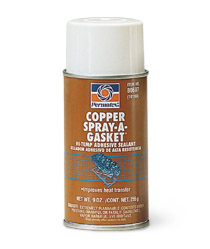just like on a turbo the engine using a belt driven centrifugal compressor style supercharger spinning at high rpms is producing a significant boost pressure, a sudden change in throttle position from w.o.t too closed throttle will cause a rapid change in the intake piping pressure that can stall or damage belt driven centrifugal compressor style supercharger, an engine thats supercharged runs higher cylinder pressures, which means it tends to stretch head bolts and any sudden change in cylinder pressure will effect the head gasket clamp loads, and connecting rod,piston and bearing stress changes rapidly.
http://www.americanmuscle.com/superchar ... guide.html
Other Common Supercharger Components
Blow-Off Valve
A blow-off valve is used to relieve boost pressure. Boost is created as throttle input is increased, and the engine’s RPM begins to increase. If throttle input is decreased, the boost pressure must be relieved. A blow-off valve allows this pressure to be vented to the atmosphere, and not enter the engine’s intake when it’s not needed. Sometimes with smaller boost installations of 5 psi, a blow-off valve may not be used. As boost pressure increases, however, the ability to relieve the boost pressure becomes increasingly important, as engine damage could result.
Bypass Valve
The blow-off valve is sometimes incorrectly referred to as the bypass valve, however, there is a difference between the two. To increase the efficiency of positive displacement superchargers, some manufacturers will allow some air to bypass the supercharger’s rotors at lower engine RPM speeds. This equalizes the pressure on both side of the rotors and increases the efficiently of the supercharger when boost is not required. This comes into play at cruising speeds or slow acceleration; basically, times when very little throttle is being used.
Intercooler
One of the side effects of the way superchargers work is that, when it’s compressing the incoming air, it also heats that same air being compressed. That lessens the denisty of the air some, and can potentially increase the heat in the engine. To combat this, an intercooler is often used. The intercooler is typically placed after the supercharger, and the compressed air is forced through it. Intercoolers are fed by engine coolant most of the time, although some race setups have the ability to facilitate the use of ice. While the fact that the air passing through the intercooler will cause some minor loss of boost pressure, the benefits of cooling the incoming air far outweigh the disadvantages of an intercooler.
A centrifugal supercharger uses an intercooler that is placed into the piping that connects the supercharger to the intake. In the case of a positive displacement supercharger, the intercooler is placed between the supercharger and the motor. The air exits the underside of the positive displacement supercharger, and is moved through the intercooler and then into the intake. Sometimes the intercooler is also referred to as a heat exchanger.
As a sidenote, a typical intercooler in use today would be more appropriately referred to as an “aftercoolerâ€, since it cools the air after it has been compressed. Early intercoolers were placed before the supercharger/turbocharger, and used normal airflow to cool the incoming air charge. The name "intercooler" has stuck through the years, and persists to this day.
Advantages and Disadvantages of Superchargers as a Power Adder
The chief disadvantage to a supercharger is that the incoming air is heated as it’s compressed. Nitrous, as a power adder, doesn’t have this disadvantage, as cooling is a side effect of the change nitrous undergoes when it switches from a liquid to a gas. Superchargers are always driven by the engine as well, adding a small amount of load on the engine, even if they aren’t producing boost. While the use of a bypass valve has helped with this aspect, there is still a small impact to fuel economy.
A supercharger has several advantages in its favor, however. The first of these is the fact that, unlike with nitrous, bottle refills are not necessary. The power provided by a supercharger is also always ready, requiring nothing more that the throttle to be opened up. Because of this, and the fact that the use of nitrous on the street may be illegal on some areas, supercharging is one of the most popular options for street-driven Mustangs. The supercharger may seem expensive at first, but when it comes to weighing the horsepower gained by dollar spent, it’s quickly seen as a much more viable option than replacing engine components. It’s also a much quicker install than diving into and changing parts of the motor as well, as most supercharger installations aren’t too difficult, although tuning after the fact may be required.
http://www.dragsource.com/index.php?nav ... letoview=6
"A blow off valve has few purposes, but is a very important piece.
The functions of a blow off valve
Without a blow off valve, when you let off of the gas, the compressed air in your intake piping increases to great pressures as the turbines in the turbocharger are forced to a screeching halt. The extreme pressure forces the air back through the turbocharger, increasing the wear on the turbo.
With a blow off valve, when you let off of the gas the air pressure left in your intake piping is relieved as the blow off valve opens up. This allows your turbo to continue spinning in the proper direction, preventing damage to the turbo and allowing for a faster return to positive air pressure in the intake piping.
How it works
A small diameter hose runs from the intake manifold to the blow off valve. When the pressure in the intake manifold is positive (in boost), the pressure in the small hose keeps the waste gate closed.
Once you let off of the gas, the throttle plate closes, and all of the air in the intake manifold is sucked into the engine. With negative, or zero pressure in the intake manifold, the blow off valve opens up and releases all of the compressed air from the intake piping."

